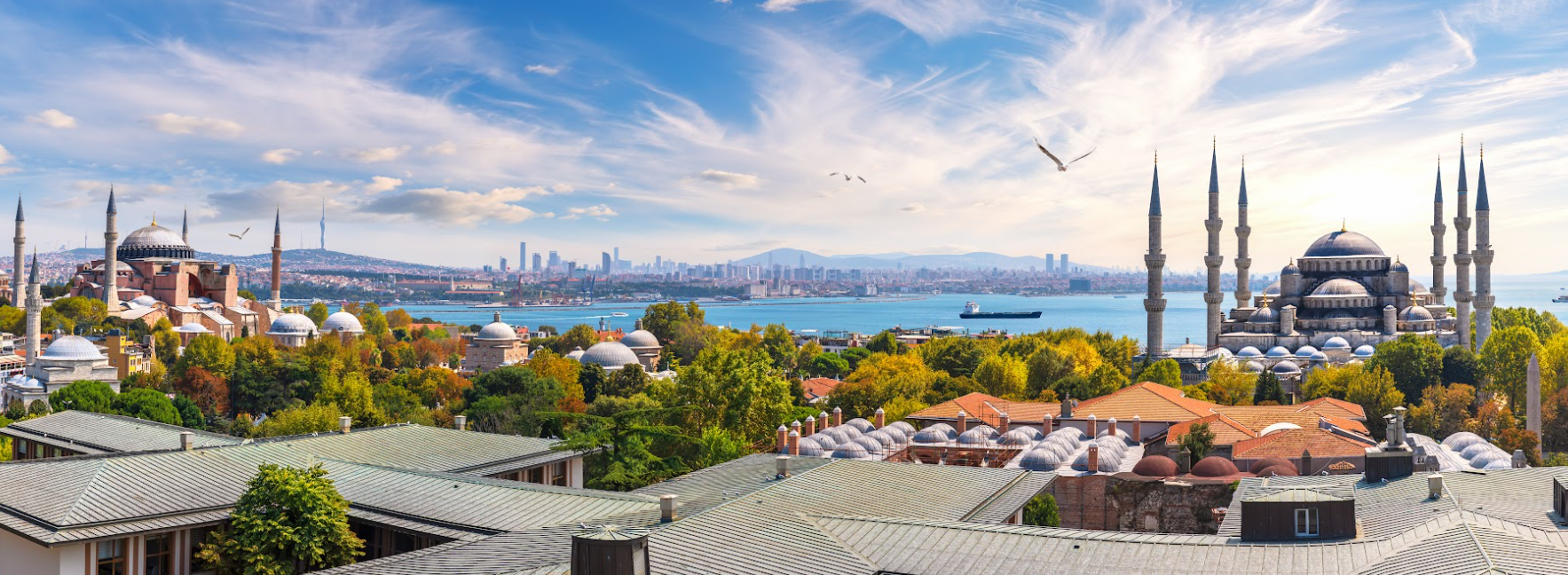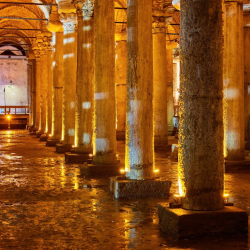History of Istanbul
Istanbul is the most populous city in Turkey and serves as the economic, cultural, and historical center of the country. While Asia is home to one-third of the world's population, Europe is where the majority of its economic and historical activity takes place. Around 660 BC, the city that would later be known as Byzantium was established on the Sarayburnu heights and would go on to become one of the most important cities in history. After being reestablished as Constantinople in the year 330 AD, the city served as the capital of not one, not two, but four different empires over the course of the subsequent nearly 16 centuries: the Roman Empire (330–395), the Byzantine Empire (395–1204 and 1261–1453), the Latin Empire (1204–1261), and the Ottoman Empire (1453–1922). Before the Ottoman Turks led by Fatih Sultan Mehmet II captured Constantinople in 1453, it was also highly significant in the spread of Christianity throughout the Roman and Byzantine periods. This was before the Ottoman Turks took control of Constantinople. After receiving its current name, Istanbul, it was selected to serve as the third and last capital of the Ottoman Empire. By the middle of the 16th century, Istanbul, which had a population of about half a million people at the time, had become an important political, cultural, and economic center. The Ottoman Empire remained in power until it was finally overthrown in World War I, after which the Allies took control of Istanbul. Ankara was selected by Kemal Atatürk to serve as the nation's capital following the conclusion of the Turkish War of Independence, which took place in 1923. However, as tangible reminders of the city's prior key importance, palaces and imperial mosques still border the hills of Istanbul.
 Geopolitical Location of Istanbul
Geopolitical Location of Istanbul
Because of its strategic location along the historic Silk Road, rail networks to Europe and the Middle East, and the only sea route between the Black Sea and the Mediterranean, Istanbul has always had a diverse population. However, this has become less prevalent since the Republic of Turkey was established in 1923. Despite the fact that it was passed over as a candidate for the position of new capital during the interwar period, the city has subsequently regained a significant amount of its prestige. Since the 1950s, the population of the city has risen by a factor of ten as a result of migration from other parts of Anatolia to the metropolitan area and the expansion of the city borders to accommodate the new residents. At the close of the 20th century, several arts festivals began to take place, and concurrently, advances in infrastructure led to the development of an intricate transit network.
Two years after it was declared a European Capital of Culture, Istanbul welcomed about 11.6 million tourists from other parts of the world in 2012. This number places Istanbul as the fifth most popular tourist destination throughout the entire globe. The historic area, which is partially recognized as a UNESCO World Heritage Site, is still the most popular destination, although the Beyoglu neighborhood on the opposite side of the Golden Horn is where the majority of the city's cultural and entertainment venues are located. Istanbul, which is known as a worldwide metropolis, has one of the metropolitan economies that is expanding at the quickest rate in the whole globe. In addition to being home to the headquarters of a significant number of Turkish businesses and media organizations, it is responsible for more than a quarter of the country's total gross domestic output.
Istanbul has an important geopolitical location, therefore serving both as a cultural and historical center for people from all races and religions. For more information, visit the Istanbul.com website
Frequently Asked Question
What is the region of Istanbul?
-İstanbul belongs to Marmara Region.
What religions are there in Istanbul?
-More than 99 percent of the population is Muslim, the majority of whom are Sunni Muslims. Other religions practiced include Christianity (Oriental Orthodoxy, Greek Orthodox, and Armenian Apostolic) and Judaism, however, the non-Muslim population dropped in the early 2000s.
What is the region of Turkey?
-Asia Minor, also known as Anatolia.
How is Istanbul divided?
-Istanbul is divided into 2 by the Bosphorus.
What is the language of Istanbul?
-Turkish is the official language of Turkey.
 Indian
Indian  Indonesian
Indonesian  Urdu
Urdu  Taiwanese
Taiwanese  Russian
Russian  Romanian
Romanian  Portuguese
Portuguese  Persian
Persian  Macedonian
Macedonian  Korean
Korean  Japanese
Japanese  Italian
Italian  Hungarian
Hungarian  Greek
Greek  German
German  Croatian
Croatian  Chinese
Chinese  Bulgarian
Bulgarian  Arabic
Arabic  French
French  Spanish
Spanish  English
English 
 Geopolitical Location of Istanbul
Geopolitical Location of Istanbul


